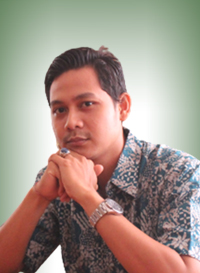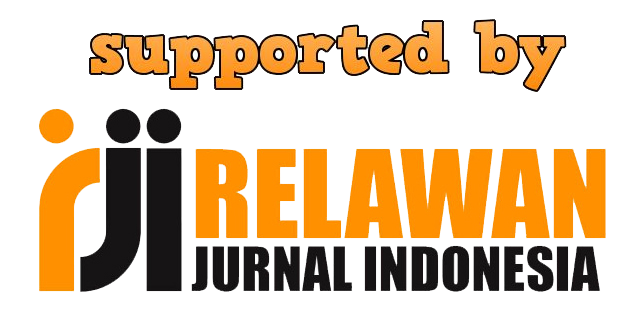Youth and Indigenous Language: Assessing Javanese Krama Madya Language Vitality
DOI:
https://doi.org/10.23887/jish.v11i3.44545Keywords:
Young Javanese Generation, Krama Madya, Language VitalityAbstract
The younger generation is one of the elements of society that is expected to maintain regional languages amid the development of globalization since they are the portrait of the cultural future. This study aims to measure the level of vitality of the Krama Madya language from the perspective of the young Javanese generation in Malang. The measurement framework used in this study is adopted from UNESCO language vitality measurement factors. Data were obtained from 100 young Javanese generations aged 17-27 years who live in Malang City with various backgrounds using the cluster random sampling technique, ranging from students, teachers, government agencies, and employees to traders, by distributing questionnaires, interviews, and direct observations in the field. The data were analyzed using a qualitative descriptive analysis framework adopted from Miles and Huberman (1994). This study indicates that Javanese Krama Madya among the young Javanese generation, based on nine factors of language vitality to measure the level of UNESCO language vitality, is categorized as vulnerable. The indication of this conclusion is based on the diminishing number of language transmissions between generations; the unavailability of literacy that supports the teaching of the language; as well as the negative attitude of the younger Javanese generation, as shown by the shift in the use of this variety with Indonesian and foreign languages in interactions with older and respected speech partners to show their politeness.
References
Asmorotedjo, A. (2019). Bali Jawi Menghidupkan Kembali Nilai-Nilai Luhur Manusia Jawa. JOGED: Jurnal Seni Tari, 10(1), 1–15. https://doi.org/10.24821/JOGED.V13I1.2684
Borland, H. (2006). Intergenerational language transmission in an established Australian migrant community: what makes the difference? International Journal of the Sociology of Language, 2006(180). https://doi.org/10.1515/ijsl.2006.038
BPS Kota Malang. (2018). Kota Malang Dalam Angka 2018. 178.
Candrasari, R., & Nurmaida. (2018). Model Pengukuran Vitalitas Bahasa. Sefa Bumi Persada.
Candrasari, R., Silvana Sinar, T., & Widayati, D. (2017). Vitality of Simeulue’s Devayan Language. In Quest Journals Journal of Research in Humanities and Social Science (Vol. 5). www.questjournals.org
Errington, J. (1999). Shifting Languages: Interaction and Identity in Javanese Indonesia. Cambridge University Press.
Fishman, J. A. (1994). Reversing Language Shift: Theoretical and Empirical Foundations of Assistance to Threatened Languages: Reversing Language Shift: Theoretical and Empirical Foundations of Assistance to Threatened Languages. In Journal of Linguistic Anthropology (Vol. 4, Issue 1). https://doi.org/10.1525/jlin.1994.4.1.97
Garrett, P., Coupland, N., & Williams, A. (2003). Investigating Language Attitudes.
Idrus, M. (2012). Character Education In The Javanese Family. Jurnal Pendidikan Karakter, 2(2), 118–130. https://journal.uny.ac.id/index.php/jpka/article/view/1297/1078
Joemanto. (2020). Pragmatics within English Teaching. Webinar PDF.
Karimkhanlooei, G., & Vaezi, N. (2017). Politeness strategies in written communications: the issue of Iranian EFL learners. Journal of Language and Cultural Education, 5(3), 108–126. https://doi.org/10.1515/jolace-2017-0031
Kemdikbudristek. (2022). Gambaran Kondisi Vitalitas Bahasa Daerah di Indonesia. Kemdikbudristek. http://publikasi.data.kemdikbud.go.id/uploadDir/isi_4BC3AA5E-D2D8-4652-B03D-B769C7409F79_.pdf.
Kurniawati, W., Emzir, E., & Akhadiah, S. (2021). Language Vitality Of Sundanese In Cianjur City. Jurnal Pendidikan Bahasa Dan Sastra, 21(1), 37–50. https://doi.org/10.17509/bs_jpbsp.v21i1.36657
Miles, M. B., & Huberman, M. (1999). Qualitative Data Analysis an Expanded Sourcebook 2nd Edition. SAGE Publications.
Mogara, B., Kari, E., Kadenge, M., & Molefhi, D. (2017). Investigating Language Vitality in Some Parts of North Eastern Botswana. Marang: Journal of Language and Literature, 29.
Obiero, O. (2010). From Assessing Language Endangerment or Vitality to Creating and Evaluating Language Revitalization Programmes. Nordic Journal of African Studies, 19(4), 26–26.
Pemerintah Indonesia. (2009). Undang-Undang No. 25 Tahun 2009 tentang Bendera, Bahasa dan Lambang Negara, serta Lagu Kebangsaan. RI Tahun 2009 No. 25. Jakarta: Sekretariat Negara.
Putri, N. W. (2018). Pergeseran Bahasa Daerah Lampung pada Masyarakat Kota Bandar Lampung. Jurnal Penelitian Humaniora, 19(2).
Sahril, N. (2018). Pergeseran Bahasa Daerah Pada Anak-Anak di Kuala Tanjung Sumatra Utara. Ranah: Jurnal Kajian Bahasa, 7(2), 210. https://doi.org/10.26499/rnh.v7i2.571
Septiana, D., Indah Yulianti, A., Karyani, L., Bahasa Kalimantan Tengah, B., & Bahasa Sulawesi Selatan, B. (2020). Language Shift and Vitality of Paku Language in East Barito. International Journal of Multicultural and Multireligious Understanding, 7, 403–410. https://doi.org/10.18415/ijmmu.v7i4.1655
Subroto, D. E., Dwirahardjo, M., & Setiawan, B. (2008b). Endangered Krama and Krama Inggil Varieties of the Javanese Language. Linguistik Indonesia, 26(1).
Suharyo, S. (2018). Nasib Bahasa Jawa dan Bahasa Indonesia dalam Pandangan dan Sikap Bahasa Generasi Muda Jawa. Nusa: Jurnal Ilmu Bahasa Dan Sastra, 13(2), 244. https://doi.org/10.14710/nusa.13.2.244-255
Suryadi, M., Subroto, H. D. E., & Marmanto, S. S. (2014). The Use of Krama Inggil (Javanese Language) in Family Domain at Semarang and Pekalongan Cities. International Journal of Linguistics, 6(3), 243–256. https://doi.org/10.5296/IJL.V6I3.4553
UNESCO. (2003). Language Vitality and Endangerment. International Expert Meeting on UNESCO Programme Safeguarding of Endangered Languages .
Wilian, S. (2006). Tingkat Tutur dalam Bahasa Sasak dan Bahasa Jawa. Wacana, Journal of the Humanities of Indonesia, 8(1), 32. https://doi.org/10.17510/wjhi.v8i1.245
Yamamoto, A., Brenzinger, M., & Villalón, M. E. (2008). A place for all languages: On language vitality and revitalization. Museum International, 60(3), 60–70. https://doi.org/10.1111/j.1468-0033.2008.00653.x
Downloads
Published
Issue
Section
License
Copyright (c) 2022 Munawwir Hadiwijaya, Yahmun Yahmun, Chindy Hanggara Rosa

This work is licensed under a Creative Commons Attribution-ShareAlike 4.0 International License.
Authors who publish with the Jurnal Ilmu Sosial dan Humaniora agree to the following terms:
- Authors retain copyright and grant the journal the right of first publication with the work simultaneously licensed under a Creative Commons Attribution License (CC BY-SA 4.0) that allows others to share the work with an acknowledgment of the work's authorship and initial publication in this journal.
- Authors are able to enter into separate, additional contractual arrangements for the non-exclusive distribution of the journal's published version of the work (e.g., post it to an institutional repository or publish it in a book), with an acknowledgment of its initial publication in this journal.
- Authors are permitted and encouraged to post their work online (e.g., in institutional repositories or on their website) prior to and during the submission process, as it can lead to productive exchanges, as well as earlier and greater citation of published work. (See The Effect of Open Access)


.png)
.png)













